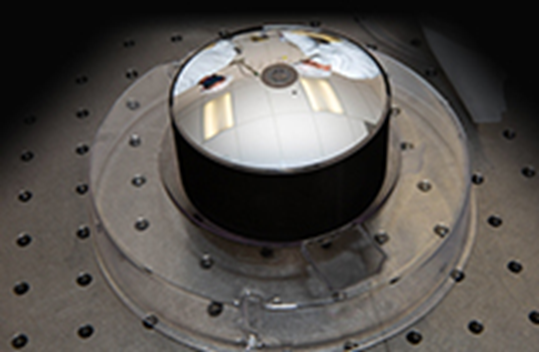Monolithic telescopes fabricate a reflective telescope into a single silica substrate. This approach provides exceptional mechanical stability because the relative position of the mirrors is permanently polished into a monolithic substrate and is inherently temperature insensitive due to the low CTE of fused silica (0.5 ppm/K). Once fabricated, monolithic telescopes can be taken for granted because the mirrors will always be aligned, even after subject to extreme force like during launch into space.
Rapid monolith development at scale is achieved through use of a functionally equivalent optic simulant made from a low-cost material to substitute the functional optic. Monolith optical performance is affected not only by thermal expansion but also by temperature inhomogeneity due to the temperature dependence of refractive index. The inventors developed FEA models to predict temperature homogeneity in space and ray trace codes to simulate its effects on optical performance. The invention further employs a novel ring housing which compresses the monolithic optic between a thin elastomeric material to a set pressure thereby kinematically constraining the telescope in all six degrees of freedom to act as a suspension system under dynamic acceleration and provide accommodation of thermal expansion mismatch.
- All the stability advantages of a monolithic optic without the weight or optical absorption.
- Enables fast closure to high-TRL and rapid deployment of mission specific novel optical designs.
- Resolves challenges associated with space deployments of monolithic telescopes.
- Can be used in any application requiring fixed reflective optical elements.
- Space payload launch and deployments of large optomechanical assemblies
- Space situational awareness and navigation
Current stage of technology development: TRL 4-5


